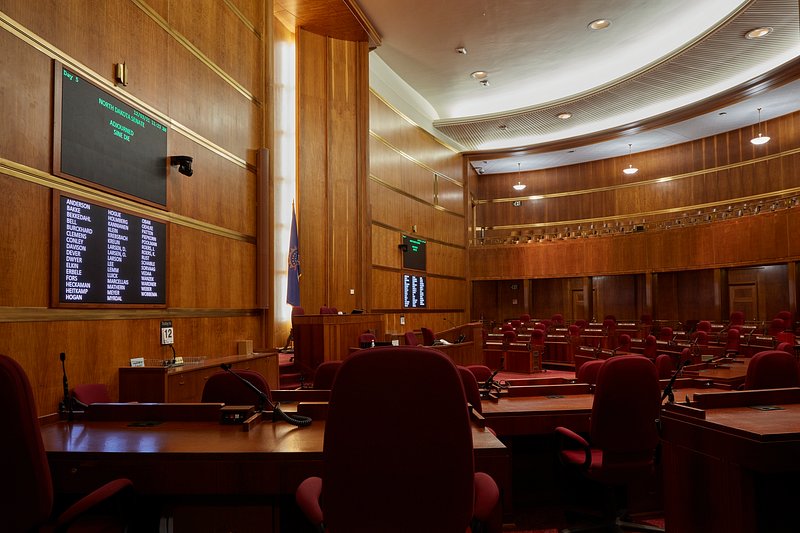South Dakota House Rejects Ten Commandments Bill Amidst Diverse State Narratives
The South Dakota House took a significant stance this week as it voted against the contentious Senate Bill 51, which sought to mandate the display of the Ten Commandments in public schools across the state. Thirty-seven representatives voiced opposition, highlighting the complex dynamics within South Dakota’s diverse communities.
The proposed bill would have required the Ten Commandments to be prominently displayed and taught at least once between grades one and four, five and eight, as well as in high school. Despite the historical significance and traditional presence of the Ten Commandments in various U.S. public buildings, including those in Washington D.C., as argued by Rep. Heather Baxter (R-Rapid City), the move was met with resistance in the House.

Liz May R-Kyle
Rep. Liz May (R-Kyle), who introduced an amendment to the bill, emphasized the cultural importance of such measures in educational settings. Nevertheless, the division within the House underscored the pluralistic values held by South Dakotans, who balance tradition with contemporary multicultural and secular values.
Attorney General Marty Jackley had shown support for the bill, seeing it as a part of larger efforts to reinforce familiar values within the educational system. However, the decision to halt the bill reflects a deeper discourse about the role of religious practices in public institutions in a state known for its mix of prairie roots and progressive city centers.

Heather Baxter R-Rapid City
South Dakota’s population, known for its tight-knit community feel and independent spirit, showed a clear divide on the issue. Many residents in urban areas like Sioux Falls and Rapid City have adopted more diverse perspectives, while rural residents tend to lean towards traditionalism. This contrast was visible in the House vote, where thirty-one representatives voted in favor of the bill—even as forty-nine members were present, with Rep. Kaley Nolz (R-Mitchell) excused from the session.
The rapid growth and change in demographic and cultural landscapes in South Dakota may contribute to the shifting attitudes toward issues like these. As more people move to urban centers, influenced by economic opportunities and educational prospects facilitated by South Dakota’s burgeoning industries, the legislative preferences and priorities are also transforming.
What Does This Mean for South Dakota?
Locally, the defeat of this bill sends a message about the state’s direction regarding education and religious influence. South Dakota, home to the infamous Mount Rushmore and known for its wide-open spaces and rich history, grapples with blending its identity as a rural heartland with its role in a rapidly changing society.
The decision reveals broader themes resonating through the valleys and prairies of South Dakota, prompting discussions beyond the legislative chambers into churches, schools, and family dining rooms.
This outcome is likely to set precedents in South Dakota’s policy-making environment, especially concerning how public spaces and entities approach religious content. As debates about educational content continue to evolve, lawmakers must balance public opinion, constitutional guidelines, and cultural heritage.
South Dakota’s legislative body, reflecting on this outcome, might pursue or resist similar laws in the future, guided by constituent feedback and electoral trends across the state’s vast and varied electorate.
The Argus Leader will continue tracking this evolving story, delivering insights and updates here as South Dakota navigates these important issues that reshaped its educational landscape this legislative session.
